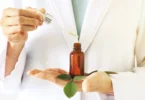KUALA LUMPUR: In the northern part of the Malaysian peninsula, the leaves of the ketum plant (Mitragyna speciosa) is traditionally boiled and drunk to treat ailments like fever, joint paints and diarrhoea.
The juice is also used as a remedy for worm infection, high blood pressure and diabetes.
For those who toil in the fields or in the sea, ketum juice is often used as a pick-me-up as it is said to be a potent energy booster.
However, until today, the benefits of the plant locally known as “biak” has yet to be proven scientifically as the plant has never been used in modern medicine.
In fact, even the pharmacological effects of ketum leaves on the human body have not been studied in detail.
This is despite the long-standing debate of the effects of ketum juice consumption, particularly among drug addicts in the northern and east coast states of peninsular Malaysia.
Ketum leaves contain alkaloids which are said to provide a similar high to those addicted to opiates such as heroin, morphine and the ones in cough syrups.
Opiates bind to something called “opioid receptors” in a person’s nervous system, causing them to get high. Ketum leaves, while less potent, also bind to opioid receptors. That is why addicts take ketum to simulate the kind of high they get with morphine and heroin.
However, what is becoming a concern is when addicts try to “boost” the potency of the ketum juice by adding cough syrup and even mosquito coil. This is done in order to get a stronger kick while reducing dependency on the drug they are addicted to.
KETUM-GROWING BANNED
Under the Poisons Act 1952, the government has prohibited ketum from being commercially grown.
However, the request by Rubber Industry Smallholders Development Authority (RISDA) Chairman Datuk Zahidi Zainul Abidin for permission to grow ketum to help the country’s small-scale farmers has sparked a long and heated debate.
The request has brought opposition from many quarters including from the Royal Malaysia Police and the National Anti-Drug Agency (AADK), which want ketum to be classified under the Dangerous Drugs Act 1952.
Zahidi’s argument was that ketum (also known as kratom is many countries) had many medicinal properties and a huge market, especially in Europe and Japan.
The neighboring Indonesia is reportedly generating RM10 million a month from the sales of ketum, grown mostly in Kalimantan.
It was not only farmers that would benefit from the commercial growing of ketum, but the government would be able to collect export taxes as well, said Zahidi.
Echoing Zahidi’s sentiment was the Director of the University of Malaya Centre for Addiction Sciences (UMCAS), Dr Rusdi Abdul Rashid, who believed that the regulated growing of ketum could boost the country’s economy.
Furthermore, he said, until now there has yet to be a thorough research proving the adverse effects of ketum consumption.
UMCAS itself has carried out two studies on ketum usage in 2010 and 2017 in Kedah and Perlis to determine its effects of the community.
The findings revealed that ketum usage did not result in dependency or addiction.
Instead, it found that addicts of opiates and Amphetamine-type Stimulants (ATS) could wean off their dependency by drinking ketum juice.
NO ADDICTION
Dr Rusdi, who is also a psychiatry consultant at the Universiti Malaya Specialist Centre (UMSC) said that the 2010 research involved 65 participants in Alor Setar, Kuala Kedah and Sungai Baru, Perlis. All three areas have an established population of ketum juice users.
The findings revealed that 50 percent of the ketum users have or are still using illegal drugs such as opiates and ATS. Thirty percent were adults who drink ketum on an occasional basis while 20 percent were youths who had only started the habit.
The addicts consume between three and six glasses a day to manage their drug addiction.
The other two groups, meanwhile, drink only once or twice a week.
“Those who were not addicts drank ketum to treat joint pains and diabetes. Some also use it to give them the energy needed to toil at the fields.
“It is not addictive enough that they would need to increase their consumption of it,” he told Bernama when met recently.
UMCAS’s most recent study last year was held at a land scheme in Perlis by studying household occupants aged 18 and above.
A hundred and thirty participants were interviewed and 26.4 percent were found to be ketum users.
Of the percentage, 30 percent were frequent users while the rest consumed only once or twice a week.
“Those who frequently consume ketum were also those who have used opiates like heroin and ATS drugs like ice.
“Their ketum usage reduces their tendency to use illegal drugs. Our observation found that if addicts make the switch from heroin and ice to frequent consumption of ketum, that maybe better for their health and daily function,” he revealed.
Dr Rusdi said the switch could also reduce addicts’ chances of being infected by HIV and AIDS as well as hepatitis B and C, which could all be transmitted via needle and syringe use.
KETUM CAN BE USED TO TREAT ADDICTION
Ketum has the potential of replacing the current drug substitution therapy which uses methadone to treat opioid abusers.
Methadone, said Dr Rusdi, came with a host of side effects such as chronic constipation and impotence. It could also interact with other medications used to treat HIV and tuberculosis.
“We still need alternative treatments for drug rehabilitation and the government needs to conduct more studies on treating addiction, including the usage of ketum.
“Perhaps (commercially growing) ketum can be used to boost the country’s income through its usage to treat addiction to ATS type of drugs, which, until today,” he said.
Counselling is currently the only course of treatment for ATS addiction, which understandably is not very effective. Dr Rusdi believes that a combination of counseling and medical therapy would be better.
“Counselling takes time and costs a lot. The number of available counsellors are also insufficient,” he said.
The recent study by UMCAS also found that the quality of life for ketum consumers were better than those who did not, particularly from the aspect of physical health.
Consumers were found to work harder, slept better, were more energetic and content with their bodily image and appearance.
Dr Rusdi said the study measured the broad domains of quality of life as determined by the World Health Organization (WHO).
KEEP IT UNDER THE POISONS ACT
Under the Poisons Act 1952, anyone caught importing, exporting, manufacturing, supplying, selling or in possession of ketum illegally can be fined up to RM10,000 or face four years of imprisonment or both.
Dr Rusdi believed that the punishment under the Poisons Act needed to be enforced and perhaps even be amended to include higher fines to curb ketum abuse.
However, a question that arises is that if ketum usage was put under the Dangerous Drugs Act, as suggested by AADK, what kind of treatment would be given to those hauled to drug rehabilitation centres for using it?
“Do we need to send the elderly folks who drink ketum (without spiking it with illegal substances) to treat joint pains and an ailing body to a rehabilitation centre?” he asked.
What was better, he said, was if a detailed research was conducted on ketum before it was placed under the Dangerous Drugs Act as such a move would inadvertently make it more difficult for researchers to conduct deeper research as they would be subject to legal restrictions.
“We don’t want to lose out on the economic, medical and research benefits merely because of the few who misuse it,” said Dr Rusdi.
-BERNAMA







